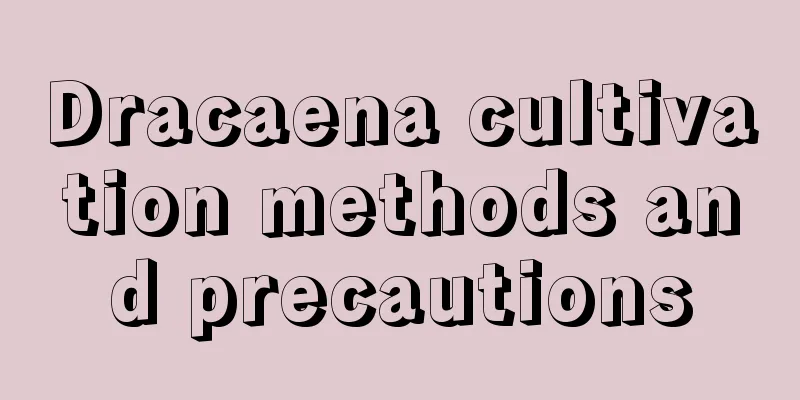Cultivation methods and precautions of Nian Tangerine

1. Maintenance methods1. Soil: When planting, the soil should meet the requirements of fertility and thickness, which is beneficial to its growth. In addition, slightly acidic or neutral soil is best. 2. Water: When the orange is in the growth period, water it when you see the soil surface is dry. Generally, watering it once a day is sufficient. If the weather is dry, spray water on the leaves. In winter, just wait until the soil is completely dry before watering. 3. Nutrients: When cultivating, put base fertilizer around its roots, such as some peanut crumbs. During the growth process, compound fertilizer should be applied once every half a month, and no fertilization is needed in winter. 4. Light: It is best to place it on a south-facing balcony so that the light will be softer, because it is afraid of strong light and high temperature. If placed outdoors, remember to provide shade during the hot summer months. 2. Breeding techniques1. Pruning: When it is still a young tree, mainly light pruning is used to cut off the longer parts of the main branches and secondary branches. This will allow it to grow more branches and continue to shape it during the growth process. 2. Repotting: When repotting the orange, first remove the loose soil on the outside, leaving the thick small soil ball in the center. Afterwards, cut off the diseased and old roots, put tiles in the new pot, apply base fertilizer all around, put the oranges in and cover them with new soil. 3. Problem diagnosis and treatment1. Anthracnose: This is a very common disease that will cause many irregular spots to appear on its leaves. If diseased leaves are found, they should be cleaned up in time, and attention should be paid to drainage, and spraying with pesticides for prevention and control. 2. Sooty mold disease: Sooty mold disease will affect its normal growth and ornamental value. When the disease first occurs, many small coal spots will appear on the leaves, and when the disease is serious, there will be a whole layer of coal powder. If the disease occurs, be sure to spray the pesticide Lecithin in time and use Dimethoate to control aphids. IV. Other issues1. Is it poisonous? It is an ornamental plant, not strictly speaking a fruit. However, it is not poisonous and can be eaten. It just tastes bad, so it is best not to eat it. 2. Can it be grown at home: It is an ornamental plant that likes sunlight and can be grown at home for viewing. It only needs to be placed in a location with soft light and avoid high temperature exposure. |
<<: Cultivation methods and precautions of beauty cherry
>>: Cultivation methods and precautions of bird's tail flower
Recommend
Can evergreen be planted at the doorstep?
Can evergreen be planted at the doorstep? It is b...
It’s a good omen for good fortune and wealth, grow these 10 kinds of flowers in the New Year!
Good Luck Meaning: Good luck and fortune in the n...
When is the best time to prune roses?
Rose pruning time and season One of the character...
Should I use a large or small pot for my jade plant?
Should I use a large or small pot for my jade pla...
How long does it take for red maple cuttings to take root?
Rooting time of red maple cuttings Red maple is s...
Can cherry blossoms be planted in pots?
Can cherry blossoms be planted in flower pots? Ch...
How often should I water Phalaenopsis?
How often should I water my Phalaenopsis? When wa...
High-yield planting technology of pepper
Chili is a common seasoning vegetable in life and...
What to do if Anthurium loses its leaves
1. Improper watering If there is too much water, ...
How to grow wintersweet
1. Maintenance methods 1. Watering: The plant is ...
What kind of soil should be used to grow Clivia, and how to relieve the yellowing of leaves
1. What kind of soil to use It has a thick fleshy...
The difference between golden bud flower and shrimp flower
Different flowers The flowers of the goldenrod ar...
Can yellow jasmine survive in the soil?
1. Can it survive? Theoretically, the yellow jasm...
Cultivation methods and precautions of five-petal lotus
The five-petal lotus is also called yellow chrysa...
What is Babaocai?
What is Babaocai? Eight Treasures Dish is a kind ...









